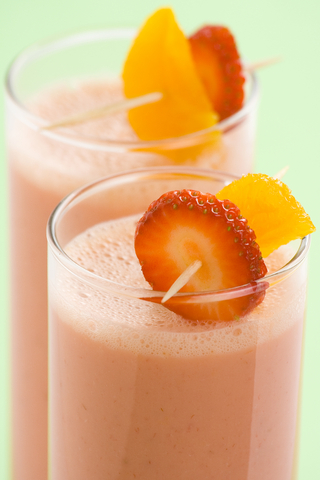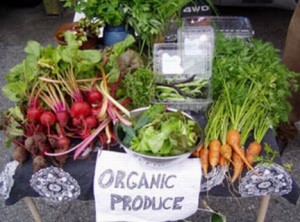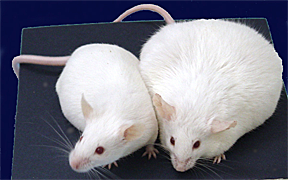Filed under: General Health, Nutrition
Quick reminder before we get to the meat and potatoes that the introductory price of $97 on Optimal Shoulder Performance: From Rehabilitation to High Performance ends tonight at midnight – when the price goes up by $30. This DVD set has been getting some awesome feedback, so don’t miss out on this last chance to get it at an awesome value.
Many people who are health conscious will increase their vegetable intake tremendous, but will turn their nose up at fruit because vegetables are “better”. The thought is that vegetables provide all of the same benefits as fruit: vitamins, minerals, antioxidants, phytonutrients, water, fiber, etc without as much sugar. This is pretty much all true, but there are many things about foods that are yet to be discovered, and fruit may just have some benefits of its own, that surpasses that of even the great vegetables.

Enter Age-Related Macular Degeneration. In a 2004 study from the Archives of Ophthalmology (abstract of paper), it was found that fruit out-performed vegetables, antioxidant vitamins and carotenoids in preventing age-related macular degeneration.
The goal of the study was to examine the intake of antioxidant vitamins A, C and E, carotenoids, fruits and vegetables in relation to the development of age-related macular degeneration (ARMD), the primary cause of vision loss in older adults. It also looked at the development of neovascular ARMD, which is a more severe form of the illness.
The study followed over 110,000 men and women at least 50 years old who had no previous diagnosis of ARMD or cancer, for 12 to 18 years.

A total of 464 cases of early ARMD and 316 cases of neovascular ARMD were developed over that 12 to 18 year period (12 years for men, 18 for women). Fruit consumption was found to be inversely correlated with neovascular ARMD. It was found that participants who consumed 3 or more servings of fruit per day were 36% less likely to develop neovascular ARMD than those who consumed less than 1.5 servings per day. Surprisingly intakes of vegetables, carotenoids and vitamins A, C and E were not strongly related to either form of ARMD.
The take home point is not to start just slamming down fruit in place of vegetables, since vegetable are still tremendous foods with tons of other benefits, but to not be afraid to add a few servings of fruit per day into your diet. A few ounces of POM juice at breakfast with a banana, maybe a smoothie recipe later in the day, and a yogurt with some strawberries and blackberries as a nice snack would be a fine example. Three servings per day is definitely not hard and won’t contribute a large amount of sugar to your diet, so go ahead and enjoy Nature’s candy.
Filed under: General Health, Nutrition, Recipes
This is a recipe I concocted on the fly not too long ago. With the vanilla almond milk and protein, the coconut and the pineapple it has a slight ring of pina colada to it, and the touch of mango and strawberry really thickens the shake and gives it a slightly sweet flavor and meatier texture. It is absolutely delicious. The chia seeds add some omega-3′s and some soluble fiber, which is especially important since this a slightly higher carb smoothie than I normally post. This would be a great smoothie to enjoy on a hot summer day. Enjoy!

Tropical Awesomeness
Nutrition Information: 450 calories, 23 g protein, 20 g fat, 45 g carbs, 8.5 g fiber
Also a quick reminder. Eric Cressey and Mike Reinold’s Optimal Shoulder Performance has been getting rave reviews. Due to a problem with their shopping cart software they are extending the introductory price of $97 until this Wednesday at midnight, EST. When it comes to shoulder health and performance, this DVD set is at the top of its class. After Wednesday at midnight the price will go up to $127, so act now.
Filed under: General Health, Nutrition
Many people wonder if it is worth buying organic produce, or if the extra price lightens your wallet without improving your health any more than conventional produce would.

Unfortunately evidence does not seem to provide a conclusive answer. Some research shows that organic produce have higher vitamin, mineral and antioxidant content. Other research shows the nutritional difference between organic produce and conventional to be insignificant. In reality there may be much more to the story than simply the nutrient content: the enormous amounts of pesticides, herbicides and fungicides conventional farmers use to keep bugs and weeds at bay.
Again some research has shown that the consumption of these chemicals in the amounts expected from daily produce consumption does not produce any harm, at least in the parameters covered in the study. Yet there is emerging research telling us a different story. Original research on the safety of these chemicals did not take into account possible weight-regulation disruption. Many of these compounds mimic hormones in our body, disrupting the endocrine system and the delicate balance of weight maintenance and self-regulation. The combination of dozens of pesticides, herbicides, fungicides, hormones, antibiotics, xenoestrogens and the countless other chemicals we encounter everyday might be playing a much greater role in this obesity epidemic than was ever previously realized.
To illustrate this point more clearly is the fact that there is growth in obesity in a segment of the population that can’t be explained by over indulgence, poor food choices or a sedentary lifestyle: infants. The Harvard School of Public Health reported that obesity in infants under six months had risen 73% since 1980.

To explain this peculiar phenomenon, recent research has focused on the possibility that chemicals present in our environment and especially prenatal exposure to those chemicals increases risk of obesity. Many of these chemicals were once or are currently deemed safe, but this new research is showing a different story.
This recent research has been done on mice and rats, with exposure to compounds like BPA (in hard plastics), organotins (in PVC pipes, fungicides and pesticides) and atrazine (a common herbicide). It was found even with very low level exposure, and without a change in calorie intake or physical activity level, that the mice or rats exposed to the chemicals were up to 20% heavier with 36% more bodyfat (depending on the chemical) than mice not exposed. The exposed mice had decreased basal metabolic rates, increased body weight, increased intra-abdominal fat and insulin resistance; a recipe for disaster.

Control vs Chemical-Exposed Mouse
Clearly the effect of some, if not all, of these compounds in our food supply is contributing in some capacity to this obesity epidemic. Not to mention that due to toxic run-off in the Mississippi River from conventional agricultural and animal production there is a dead-zone in the Gulf of Mexico that ranges from 6,000 to 8,500 square miles (about the size of New Jersey) where oceanic life can no longer be supported. The chemicals cause the gulf to be a hypoxic wasteland where only algae can proliferate, wreaking havoc on the surrounding environment, as well as the fishing industries. Even worse, this is the most well known, but only one of approximately 250 dead-zones like this around the world.
The fact of the matter is that there is still too little known about many of the chemicals used in conventional agriculture. Ones once deemed safe for human consumption are now being found to cause problems in weight-regulation, insulin sensitivity and endocrine disruption. This is why I recommend you purchase as many organic, sustainably farmed fruits, vegetables and other foodstuffs as possible. Removing these dangerous chemicals from our food supply, and from your body, might go a long way in improving health, energy and weight regulation.
Having said all that, I certainly understand as well as anyone the limits you can have on your food budget, which can make buying organic produce difficult. To help you prioritize your organic food choices, whether you are on a budget or you would simply like to know which type of produce has the highest pesticide residues-and which do not-the following guide from the Environmental Working Group will help. I recommend buying organic at least for the 12 Most Contaminated. Regardless of whether the produce was conventionally grown or organically, I also recommend you thoroughly wash before eating with a fruit and vegetable wash.
12 Most Contaminated
1. Peaches
2. Apples
3. Sweet Bell Peppers
4. Celery
5. Nectarines
6. Strawberries
7. Cherries
8. Pears
9. Grapes (Imported)
10. Spinach
11. Lettuce
12. Potatoes
12 Least Contaminated
1. Onions
2. Avocado
3. Sweet Corn (Frozen)
4. Pineapples
5. Mango
6. Asparagus
7. Sweet Peas (Frozen)
8. Kiwi Fruit
9. Bananas
10. Cabbage
11. Broccoli
12. Papaya
I didn’t even begin to cover other realms of the topic, like different types of organic, such as industrial organic. Another topic for another day.
Filed under: Uncategorized
As some of you may know by now, though many don’t, I will be leaving Cressey Performance at the end of May. I have been accepted into the University of Maine Master’s and Dietetic Internship Program and will be starting the program in July. To go along with that, my wife matched her for her dental residency at the Togus VA in Augusta, ME which also starts in July, so we will be moving home!
This is a very exciting time for us as we are both Mainers at heart, and are looking forward to moving home to be close to our families and friends. At the same time it was a sad moment when I had to tell Pete, Tony and Eric the news that I would be leaving them and heading back to Maine. As happy as I am to further my dietetic career, and finally become a Registered Dietitian, I am definitely sad to leave behind my incredible time at CP.
I have been at CP almost since its inception, starting to intern only a few months after it started. I was soon hired and it has been an unbelievable experience ever since. A big part of the reason why I wanted to work there so badly, even though it was part-time in the beginning and I certainly was not there to get rich, was because I saw where the facility was heading. I knew big things were ahead for Cressey Performance and I wanted to be a part of that. I wanted to learn from someone like Eric, and Tony too, to become a great strength and conditioning coach. I got all of those things and so much more. Eric and Tony taught me more about strength and conditioning, injury prevention, power development, etc etc than I ever had thought existed!
I would not be half of the nutritionist I am today if it wasn’t for Cressey Peformance, and I recognize that. The growth that place provided me was unparalleled, and I can’t imagine having worked anywhere else. I also can’t forget to mention Pete, who often gets lost in the shuffle of the online world of CP. In person, at the facility, Pete is as big a part of Cressey Performance as Eric is. He has been a tremendous boss and mentor to me on the business side of fitness, as well as being a good friend.
Cressey Performance has also graciously allowed me to fill in for Cassandra Forsythe at Alternity Healthcare while she is on maternity leave. Since I will be leaving to move back to Maine shortly, as well as it being baseball season and we are only seeing about half as many clients as usual, and we need to ease the newest CP staff member Chris Howard into my role, I have dropped from 5-6 days/week at CP to 2-3.
Allowing me to become only part-time has allowed me this tremendous opportunity to work 3 days/week at a place like Alternity Healthcare. It has exposed to me areas of medicine I knew nothing about, tests and methods of disease prevention that are fascinating, as well as getting to pick the brain of a brilliant MD like Dr. Ebanks. This is a phenomenal place, where I get to do nutrition counseling in a much more clinical setting as well as putting people through functional movements screens, postural assessments and a VO2max/Stress test. It is awesome.
I can’t thank Eric, Tony and Pete enough for all they have taught me, the exposure they have given me, and the friendship they have provided. It has all been invaluable and I hope to utilize that to someday start my own facility in southern Maine.
So while I am excited to move back to my wonderful home state of Maine, be close to family and friends, and further my dietetic career, I am certainly sad to leave the wonderful Cressey Performance, that has been more home than job. Leaving the clients might even be the hardest part of the whole process, as I have developed a close friendship with too many to count. I can’t name you all by name as there would be far too many, and I don’t want to leave anyone out, but you know who you are.
So to all that have been a part of the experience, I thank you. I would not be the strength coach, nutritionist or person that I am today without you.
Filed under: General Health, Nutrition, Recipes
This amazing recipe is courtesy of CP client Lisa Gussak. It combines wholesome wheatberries with some healthy fat and veggies. Wheatberries are the entire wheat kernel, minus the hull. Due to the fact that they are not really milled or processed, they have less of an impact on blood sugar and contain more fiber, vitamins and minerals.

Lisa’s Wheatberry Salad
- 1 cup hard winter wheatberries
- Redmond Real Salt
- 1 cup finely diced red onion (1 onion)
- 6 tablespoons extra virgin olive oil, divided
- 2 tablespoons balsamic vinegar
- 1/2 red bell pepper, small-diced
- 1 carrot, small-diced
- 1/2 tsp freshly ground black pepper
- 1 stalk celery, small-diced
- 1/2 cup cranberries
Instructions
Place the wheatberries and 3 cups of boiling salted water in a saucepan and cook, uncovered, over low heat for approximately 45 minutes, or until soft. Drain.
Saute the red onion in 2 tablespoons of olive oil over medium-low heat until translucent, about 5 minutes. Turn off the heat and add the remaining 1/4 cup of olive oil and the balsamic vinegar.
In a large bowl, combine the warm wheatberries, sauteed onions, celery, red bell pepper, carrot, 1/2 tsp Redmond Real Salt, and the ground pepper. Allow the salad to sit for at least 30 minutes for the wheatberries to absorb the sauce. Season to taste and serve at room temperature.
Makes 6 servings.
Enjoy!
Filed under: General Health, Nutrition
There is a school of thought out there that some foods, namely celery and cucumbers, are negative calorie foods. That is, it requires more calories to digest them than they contain. This is false. While it is true that these are incredibly healthy low calorie foods that I highly recommend, they are certainly not negative calorie foods.

The ideas put forth usually revolve around either the Thermic Effect of Food, or due to their high fiber content (and since fiber is calorie-free right) these foods require more energy to digest than they provide.
The problem with these two ideas is that the Thermic Effect of Food only makes up about 10-15% of your total energy expenditure. Carbohydrates only require about 4 calories to digest for every 100 they provide, so no matter how low-calorie the carbohydrate-based food may be, it will never take more energy to digest than it provides.
There is also the matter of fiber being calorie free. This is a common belief, unfortunately it is a false one. Soluble fiber can and will be fermented by the body to create short-chain fatty acids like butyrate, which clearly has caloric value. The actual caloric value of fiber is therefore considered to be between 1.5-2 calories per gram. This is an average, and they type of fiber makes a difference, but no food is negative calorie!

Having said all that, cucumbers and celery still provide little to no calories at all, and are an excellent food choice. An entire cucumber only provides 45 calories, 11 grams of carbs and 2 grams of fiber while providing plenty of water, some vitamin C, vitamin K, magnesium, potassium and manganese. 4 large stalks of celery will provide about 40 calories, 9 grams of carbs, 4 grams of fiber and 1 gram of protein while providing plenty of water, some vitamin A, vitamin K, folate, and potassium.
Whether they are negative calorie or not, the more fruits and vegetables you eat, the better!
Don’t forget that the sale price on Optimal Shoulder Performance won’t last long, so if you are thinking about getting it, act now!

Filed under: General Health, Training
As many or all of you know I work at Cressey Performance, with hundreds of baseball players, healthy and unhealthy. Eric Cressey is a genius when it comes to the shoulder, and I have seen first hand how effective his methods are for getting guys with injured shoulders back on the field, or keeping them from ever coming off it. Working with Eric day in and day out truly gives you an appreciation for his dedication to his clients and their health.
Eric recently teamed up with the brilliant Mike Reinold for a seminar on Optimal Shoulder Performance. Mike is currently the Head Athletic Trainer of the Boston Red Sox. He had previously spent the last 4 years as the Rehabilitation Coordinator and Assistant Athletic Trainer. He is also the Coordinator of Rehabilitation Research and Education of the Department of Orthopedic Surgery, Sports Medicine Division, of Massachusetts General Hospital at the MGH Sports Center in Boston, MA. Needless to say, this combination of minds knows a thing or two about shoulder health and performance.

Eric and Mike held an incredible seminar at Cressey Performance a few months ago that I had the pleasure of not only being at, but being in. Yes, yours truly was the model for many of the exercise demonstrations at the seminar. It was an incredible learning experience for all. Fortunately for those of you not in attendance, Eric and Mike recorded the entire event, and are selling the DVD set of Optimal Shoulder Performance at initial low offer of only $97! It will soon go up to its normal price of $127, so act fast. Plus as an added bonus, my beautiful mug graces the cover!
If you train athletes or work with people who have shoulder problems, this is far and away the best information in one place to maximize your ability to help you clients, and keep them healthy.
Filed under: General Health, Nutrition
In my mind meat, eggs, and dairy products from pasture-raised animals are ideal for your health. Compared with conventional feedlot-raised animals, they offer you a much greater nutrient profile. They are richer in antioxidants and vitamins; including vitamins A, C, D, E, and K. Additionally, they do not contain traces of added hormones, antibiotics or other drugs and they do not eat grass that has been treated with herbicides and pesticides.
There are a number of nutritional differences between the meat of pasture-raised grass-fed animals and conventional feedlot-raised animals. Meat from grass-fed cattle, sheep, and bison are leaner, and can have up to one third as much fat content as a similar cut from a grain-fed animal. Not only are grass-fed pasture-raised animals leaner, the fat content of their meat is of a higher quality. Meat from grass-fed animals has two to four times more omega-3 fatty acids than meat from grain-fed animals. Omega-3 fats can reduce blood pressure, decrease LDL, decrease triglycerides, slow the growth of a wide array of cancers, regulate heartbeat, are essential for your brain, eyes and nerves, and people with diets rich in omega-3 fats are less likely to suffer from depression, schizophrenia, attention deficit disorder, or Alzheimer’s disease.

Allowing animals to graze on pasture provides higher amounts of omega-3 fats because omega-3′s are formed in green leaves and algae. Sixty percent of the fatty acids in grass are omega-3′s. Grain-fed animals are not given access to foods rich in omega-3′s, so their meat content contains little to none.
The same issue arises with hens and their eggs. Conventionally-raised chickens are housed indoors and are deprived of greens, mainly being fed corn, causing their meat and eggs to become artificially low in omega-3 fats. Eggs from pasture-raised hens can contain up to ten times more omega-3 fats than conventionally raised hens! Only 40% of Americans consume enough omega-3 fats, and 20% have blood levels so low that they cannot be detected. Switching to meat, dairy and eggs from grass-fed and pasture-raised animals is one way to increase your intake of these vitally important omega-3′s.
Another benefit of eating grass-fed pasture-raised animals is their CLA content. CLA is another healthy fat called conjugated linoleic acid. Meat and dairy from grass-fed animals provide the richest source of CLA on the planet, containing three to five times more CLA than feedlot-raised animals. CLA has been found to greatly reduce tumor growth in animals, and possibly in humans as well. In a Finnish study women who had the highest levels of CLA in their diet had a 60% lower risk of breast cancer than those with the lowest. Simply switching from conventionally-raised grain-fed meat and dairy to pasture-raised grass-fed versions places women in the lowest risk category.

Locating pasture-raised grass-fed animals may seem daunting, but with only a little searching you should be able to locate some near you. Websites like eatwild.com and localharvest.org can help you find local farms, farmer’s markets and natural food stores. You can either choose to eat healthy animals that get sunshine, exercise and consume a beneficial diet, or animals that spend most of their lives tightly enclosed, hardly move and consume diets that will eventually kill them, the choice is yours.
Filed under: General Health
This has been and will continue to be a crazy week. After work today we have to travel home to Maine as we are getting our puppy spayed tomorrow. We are also meeting with our photographer to finally finalize our wedding album. I am then driving back down to CP on Saturday morning to work, and then back to Maine for Easter weekend, and back to CT on Sunday evening. Needless to say, I might not have any other time to blog.
In light of all that, I have to some fun random thoughts for you today.
1. Congratulations Cass! My good friend and colleague Cassandra Forsythe-Pribanic had her baby on Saturday. A beautiful girl named April. She was a very healthy 7lbs 5oz, and if you want to find out more about Cass, her baby and the whole birthing experience, check out Cass’s blog.

2. I have the world’s cutest puppy. Her name is Lucy and I have gotten several requests from clients and readers to post a picture. She is a Pug/Italian Greyhound mix, weighs a shade over 13lbs and is cute as a button.

Lucy
3. People often over-think nutrition. Instead of reading every nutrition book you can get your hands on, and spending countless hours on blogs, spend more time actually buying and prepping your food. Look up local places to get high quality sustainably grown food, find a farmer’s market, or even a small natural food store you didn’t even know existed. Cook wholesome dinners. Basically what it comes down to is you don’t need to know every detail about nutrition, what you do have to do is make better food choices, and actually follow the advice in all those books and blogs you read. There is no magic bullet, just consistently eating real food.
4. I thought about writing some kind of April Fool’s joke, but I decided to just leave you with this little nugget instead. 10 Signs You Need a New Trainer. A solid article from the folks at Precision Nutrition.
Have a great weekend everybody!


















Posted on April 14th, 2010 by Brian St. Pierre
19 Comments »